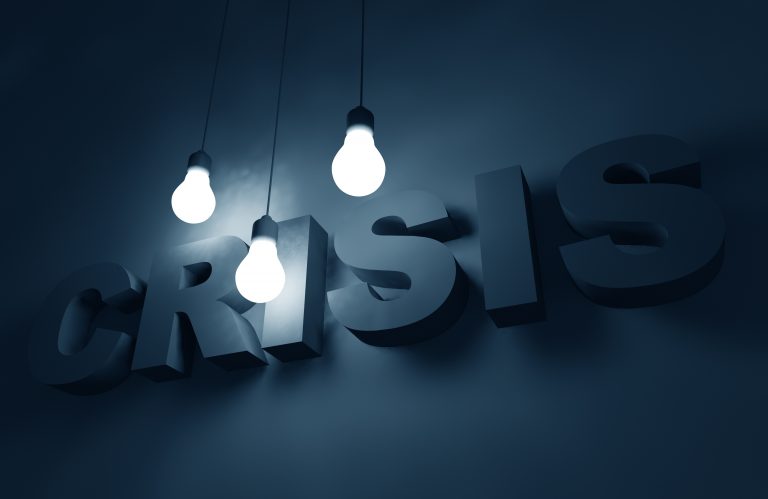Five Steps to Develop the Crisis Communication Plan
VW. Chipotle. Target. What comes to mind with these names?
Defective emissions equipment? Or deception and fraud? Food-borne illness? Or mismanagement and stock price freefall? 100 million credit card records hacked? Or denial and inadequate crisis management plans?
Each of these examples represents a business crisis that damaged reputations, hurt sales and negatively impacted the bottom line, and continue to do so well after the worst of the crisis has passed. What do they have in common? The financial damage could have been mitigated with an effective, well executed crisis communications plan, honesty and transparency.
Related: Crisis Communications – An Interview with Mike Lawrence
ICM’s mantra: It is much easier (and considerably less costly) to prepare and prevent crisis, rather than repair and repent after crisis hits.
Don’t have a plan? Where do you start?
- Identify the crisis team. Think about who needs to have a seat at the table to represent all key aspects of your organization- operations, management, employees, customers, community, volunteers, investors, legislators, regulators and other stakeholder groups. This team will make decisions and spearhead communication, so it will probably include the risk management leader, communications leader, legal counsel, HR, and the leaders of operations or departments that may be impacted. Create and maintain a contact list of these individuals and keep it handy (electronically and on paper).
- Select and train spokespersons. Who will be the official “voice” of the organization in the event of a crisis? Keep in mind that this person may vary depending on the situation. Who is the designated back-up for these persons? All should participate in media training at least annually.
- Develop communication processes and protocols. This is the heart of the plan. You will need to communicate online and offline. Identify the channels you will use to communicate in real time and who is responsible for making updates. Identify the chain of command. Who reviews and approves communications? What do you do if the story breaks before you can respond? How do you proceed if you identify a smoldering crisis? Having approved procedures in place IN ADVANCE is critical to responding quickly, calmly and protecting the brand.
- Don’t forget social media. The web and social media have dramatically changed how communicators and managers respond to a crisis. Social media can create a reputational crisis that would never have occurred “pre-internet”, demanding fast, honest, transparent communications and not “corporate-speak.” As you develop the plan and procedures, identify the channels used by your stakeholders. Are customers talking about your company on Twitter? Facebook? Monitor the channels and be prepared to respond quickly if an issue gains momentum. Have initial statements for various scenarios written, vetted and approved well before they are needed.
- Practice and Drill. Revise. Practice and Drill Again. Identify the most likely crisis scenarios that could occur in your organization and prepare crisis management templates to address them. Conduct drills to help team members get used to moving quickly to activate the plan. When you drill, use your templates, actually draft communications and conduct mock interviews.
Smart organizations have operational crisis management / emergency response plans, business continuity plans/ protocols and a crisis communication plan in place. The three plans should work together to help the organization prepare, prevent and mitigate the crises that will inevitably occur and the damage they can cause. Communication is arguably the most important element to every crisis response. Be prepared to do it right with an effective crisis communication plan.
Resource: Introduction to Crisis Communications Plans – eLearning Course
Guest blogger: Deb Hileman, CMP, President and CEO, Institute for Crisis Management







I would add: Managing up and managing down. Your plan should include how to communicate and achieve buy-in from both decision-makers and the general population who will be affected by those decisions.
Your communications should include templates for planning for crises, and for during crisis events. Use these during drills to test if your comms are quick, efficient, understood and followed.
While crisis communications is an important function during a crisis, I do not believe it to be the most important element. To my way of thinking, crisis communications is but one element of a successful crisis management plan. Crisis management is a comprehensive subject that incorporates all sections of an organization.
In a crisis, a comprehensive understanding of the relevant facts is critical. When engaging in any form of crisis communication, appropriate care should be taken to avoid any inconsistencies between required regulatory and legal responses and the messages needed to be convey to its varied constituencies. A corporation’s board cannot make disclosures in a vacuum, otherwise the board runs the risk of making potentially disastrous inconsistent statements.
It is essential that the organization become fully aware as early as possible of the facts surrounding the crisis, in order to determine whether mistakes or errors in judgement may have led or contributed to the executive misconduct. The organization’s entire strategy on how to proceed will depend on the information developed from this investigation. A prompt and properly conducted internal investigation can provide the best way for a board to get ahead of the curve and to make critical and fully informed decisions and statements.
Effective crisis communication cannot exit without information and guidance to do so runs the risk of making disastrous inconsistent statements. When experiencing a crisis, a comprehensive understanding of the relevant facts is critical. Otherwise, the organization may find itself on the defensive, uninformed about import details.
In a crisis, the organization must avoid any inconsistencies between its regulatory/legal response as well as the message company conveys to its employees, shareholders, investors or the public.